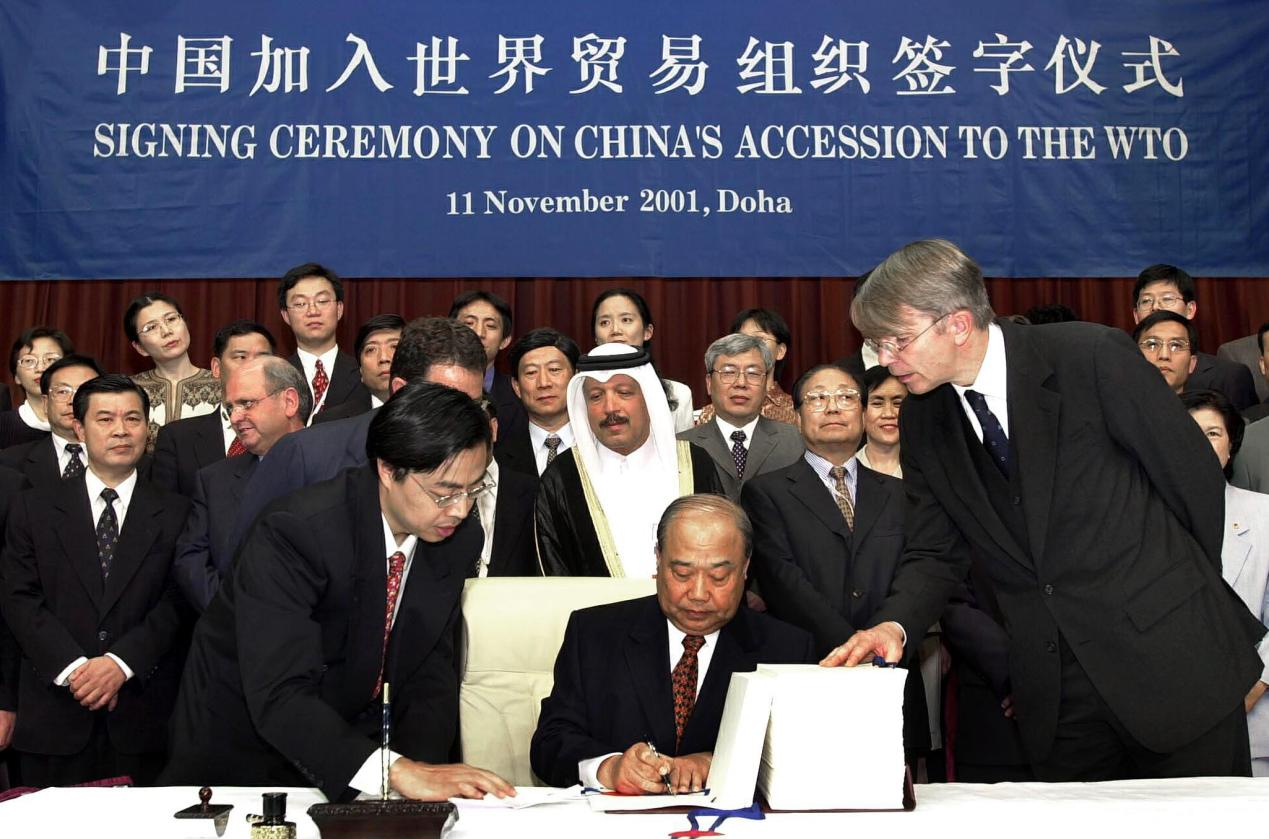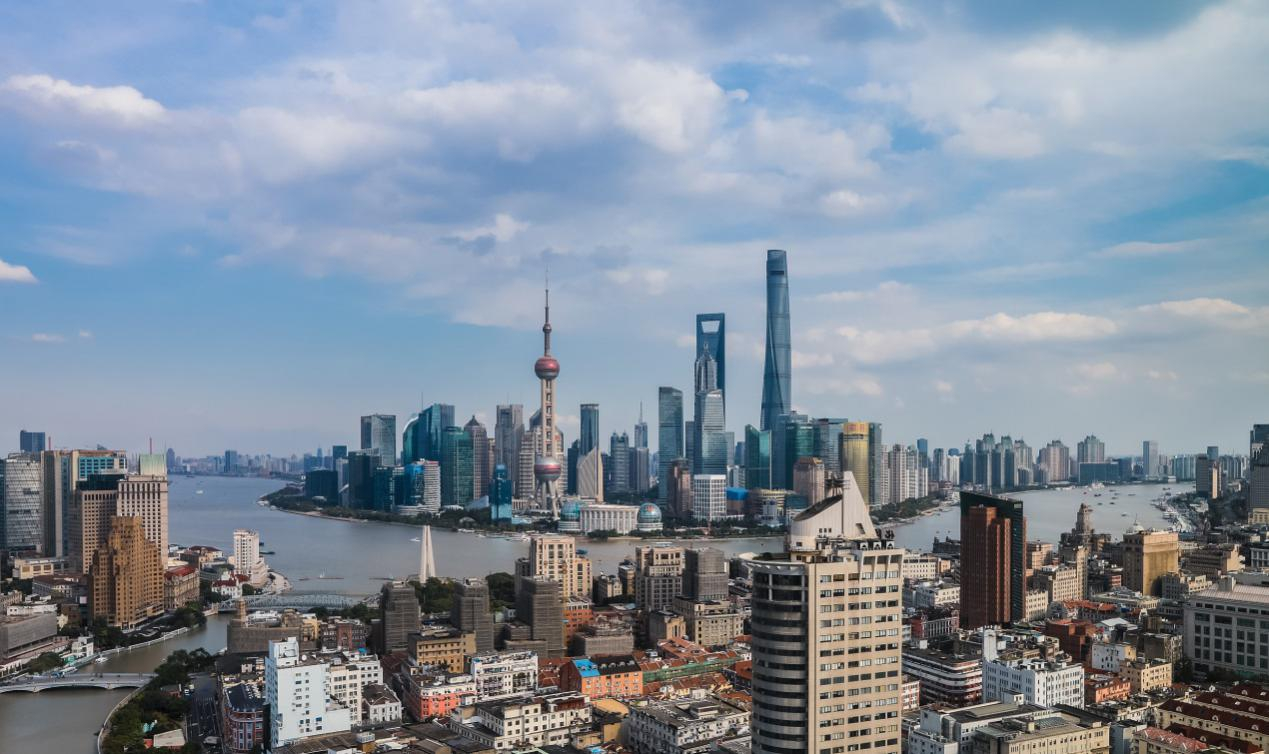China's accession to the World Trade Organization (WTO) was a milestone in the country's reform and opening-up. Here's a look at how it happened.
On December 11, 2001, China became a member of the World Trade Organization in Doha. With 164 member states, the WTO is the largest international economic organization dealing with rules of trade.
The WTO membership opened up China's market for more international trade and investment, and allowed Chinese exports into the world economy. The country's service sector was considerably liberalized, and restrictions on retail, wholesale and distribution ended. Foreign investment was allowed into banking, financial services, insurance and telecommunications.

Signing ceremony of China's accession to the WTO. /VCG Photo
Signing ceremony of China's accession to the WTO. /VCG Photo
From 2001 to 2018, China's real GDP grew by 9.2 percent on average each year. And, early in 2010, China surpassed Japan to become the second largest economy in the world. During this period, China's foreign trade grew by a stunning nine times, surging from nearly 510 billion U.S. dollars to over 4.6 trillion U.S. dollars.
As a WTO member, China has not only achieved remarkable domestic growth but positively impacted global development. China is the largest contributor to world economic growth, accounting for nearly 30 percent of global economic expansion last year.
China's WTO membership has also benefited other developing nations. Zero-tariff rates have been given to the majority of imports from many of them.
But China's success was not without hard work. In order to meet the requirements of the organization, China had to review and revise its legislation. These efforts covered 2,300 laws, regulations, and departmental rules on topics including trade, investment, and intellectual property protection.
By 2010, China had fulfilled all tariff reduction commitments, reducing the average tariff to about 10 percent. It further cut the figure on agricultural products to over 15 percent. That's one-fourth of the global average and far lower than the criteria imposed by the WTO's developing and developed members.
Furthermore, China had to deal with concerns regarding transparency and intellectual property protection.

China further opening up. /VCG Photo
China further opening up. /VCG Photo
This year, the World Intellectual Property Organization (WIPO) ranked China No.14 in its Global Innovation Index, three places up from a year ago. Also, China filed the second largest number of WIPO's Patent Cooperation Treaty (PCT) applications in 2018, and is expected to surpass the U.S. in the next two years.
Chinese leaders have repeatedly said they are determined to keep opening up the economy. Detailed measures include: Improving market access for foreign companies, improving the investment environment, protecting intellectual property rights, and expanding imports.
Despite declines in global cross-border investments, foreign investment in China rose by three percent last year. More than 60,000 foreign companies were registered in 2018, an increase of almost 70 percent. At China's first international import expo held in Shanghai last November, about 58 billion dollars' worth of deals were signed.
In the next five years, it forecasts that China will import eight trillion dollars' worth of goods and attract 600 billion dollars in overseas investment.